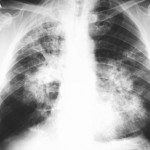Tuberculosis treatment breakthrough: shorter but just as effective
Tuberculosis patients can now literally breathe a sigh of relief after health experts announced a shorter but equally effective regimen to treat those with non-infectious cases.
Under the new cocktail of drugs devised, people with non-symptomatic tuberculosis can be treated in just three months instead of the standard nine months.
"New, simpler ways to prevent TB disease are urgently needed, and this breakthrough represents one of the biggest developments in TB treatment in decades," Dr. Tom Friedman, Centers for Disease Control and Prevention Director, said in a statement.
The standard therapy requires those with latent tuberculosis to take the drug isoniazid daily for nine months. Due to the long duration of treatment, compliance is a big challenge and many patients don't get proper treatment and some progress to advanced tuberculosis.
Researchers have been able to prove that isoniazid taken with rifapentine can be taken in just three months and can be just as effective. Moreover, the two treatment regimen caused the same amount and severity of side effects in a study conducted by Vanderbilt University and presented at the American Thoracic Society International Conference on Monday at Denver, Colorado.
But the three-month tuberculosis treatment had 82 percent of participants complete the regimen compared to just 69 percent among those who undertook the nine-month regimen. Just seven among those who took the new combo eventually developed tuberculosis compared to 15 who underwent the old regimen.
One caveat is that the new treatment regimen is at least twice more expensive than the old one. Actual guidelines that incorporate the new treatment will be finalized by the end of the year by the CDC.
According to CDC data, an estimated 11 million Americans have latent, asymptomatic and non-infectious tuberculosis.
